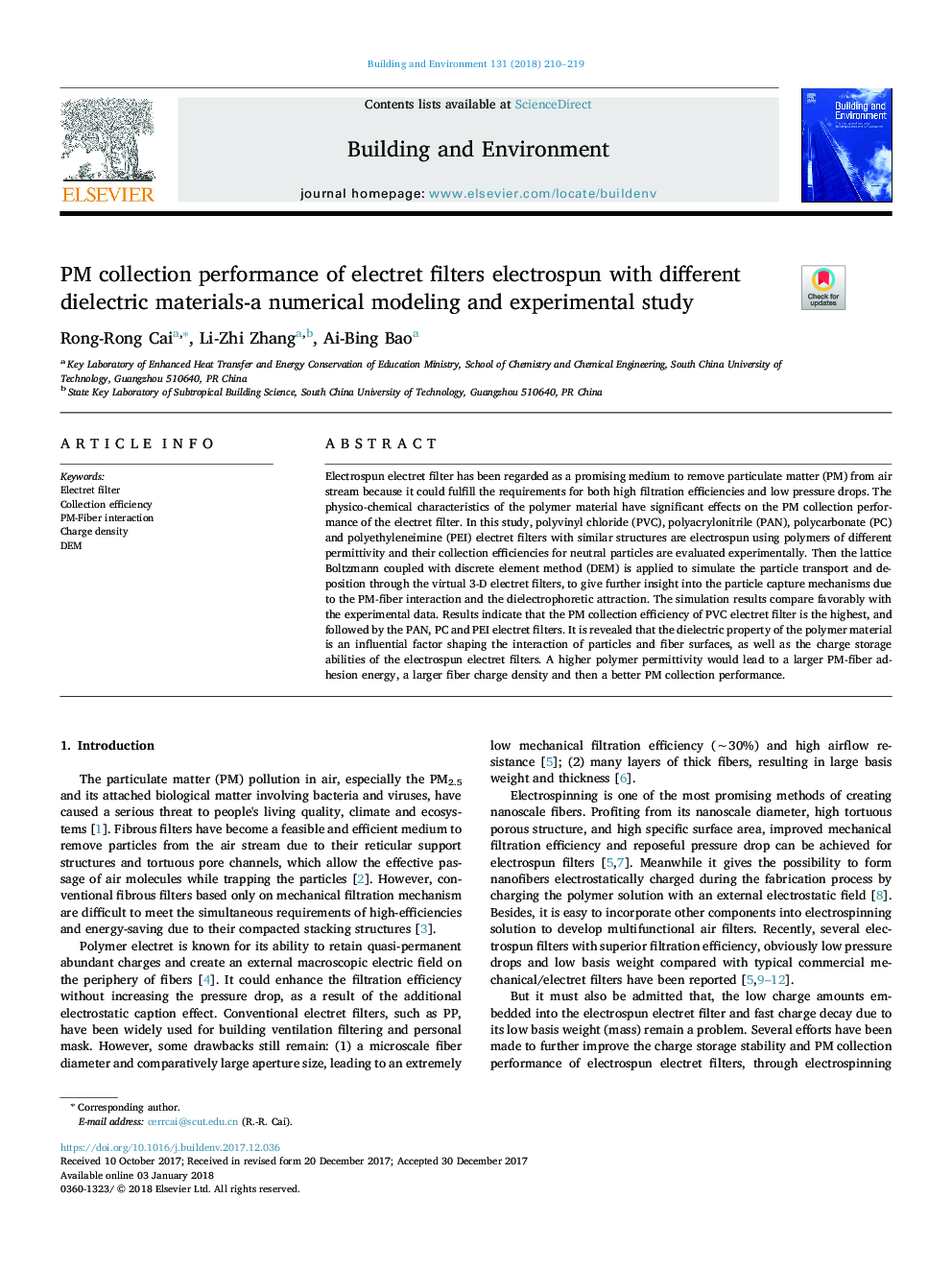| Article ID | Journal | Published Year | Pages | File Type |
|---|---|---|---|---|
| 6698070 | Building and Environment | 2018 | 10 Pages |
Abstract
Electrospun electret filter has been regarded as a promising medium to remove particulate matter (PM) from air stream because it could fulfill the requirements for both high filtration efficiencies and low pressure drops. The physico-chemical characteristics of the polymer material have significant effects on the PM collection performance of the electret filter. In this study, polyvinyl chloride (PVC), polyacrylonitrile (PAN), polycarbonate (PC) and polyethyleneimine (PEI) electret filters with similar structures are electrospun using polymers of different permittivity and their collection efficiencies for neutral particles are evaluated experimentally. Then the lattice Boltzmann coupled with discrete element method (DEM) is applied to simulate the particle transport and deposition through the virtual 3-D electret filters, to give further insight into the particle capture mechanisms due to the PM-fiber interaction and the dielectrophoretic attraction. The simulation results compare favorably with the experimental data. Results indicate that the PM collection efficiency of PVC electret filter is the highest, and followed by the PAN, PC and PEI electret filters. It is revealed that the dielectric property of the polymer material is an influential factor shaping the interaction of particles and fiber surfaces, as well as the charge storage abilities of the electrospun electret filters. A higher polymer permittivity would lead to a larger PM-fiber adhesion energy, a larger fiber charge density and then a better PM collection performance.
Related Topics
Physical Sciences and Engineering
Energy
Renewable Energy, Sustainability and the Environment
Authors
Rong-Rong Cai, Li-Zhi Zhang, Ai-Bing Bao,
